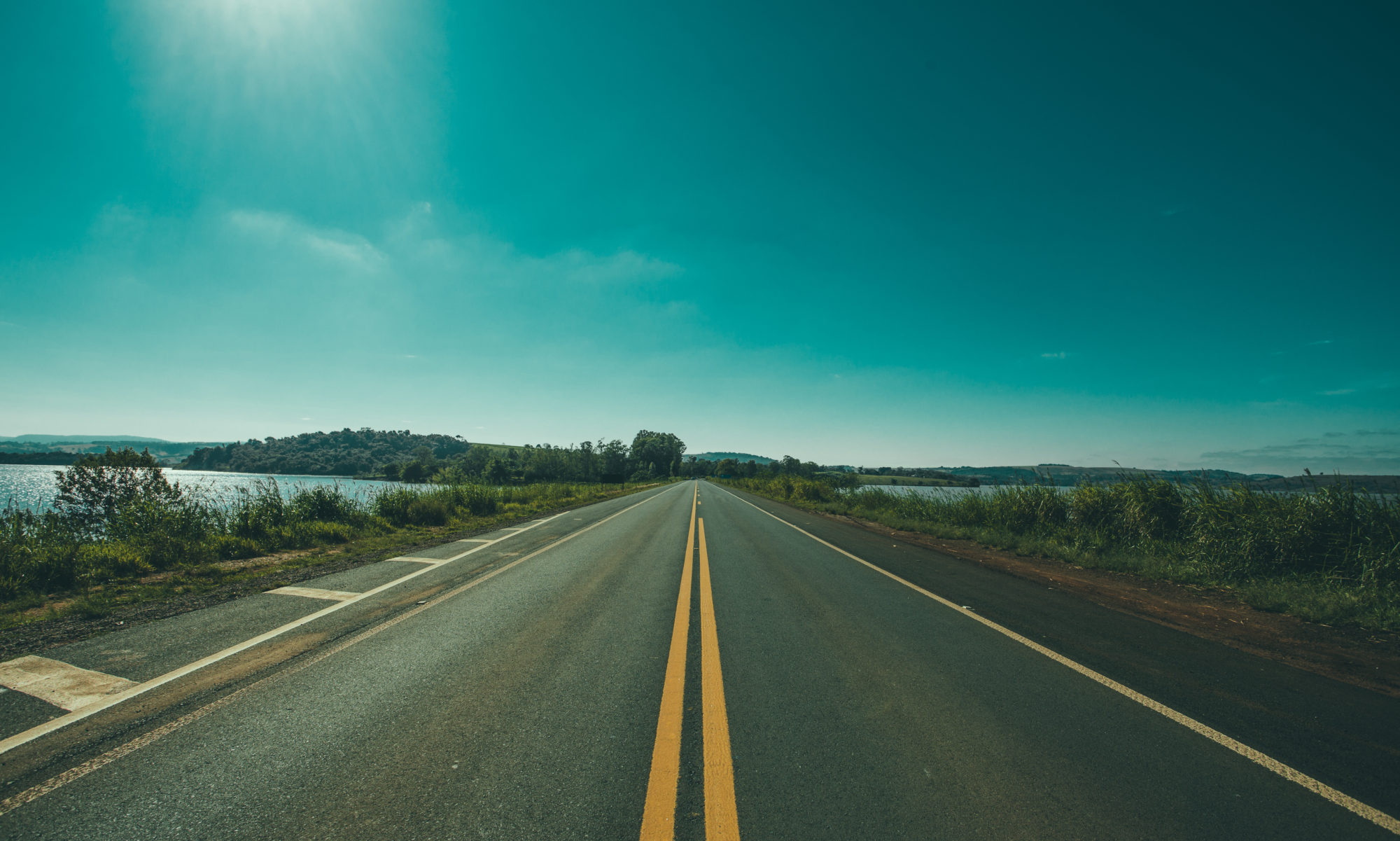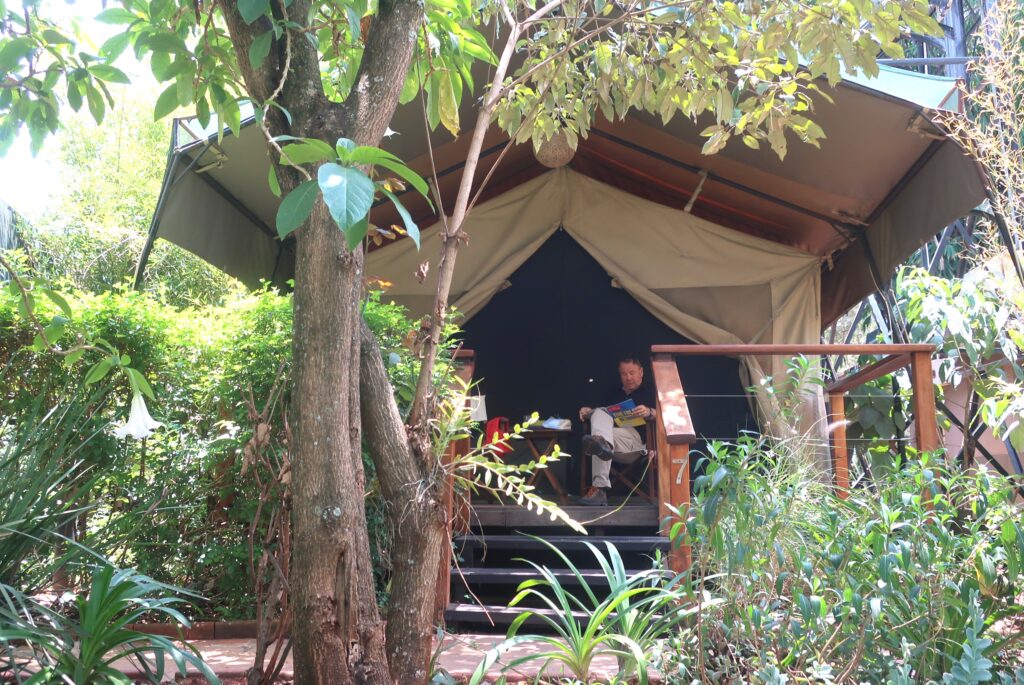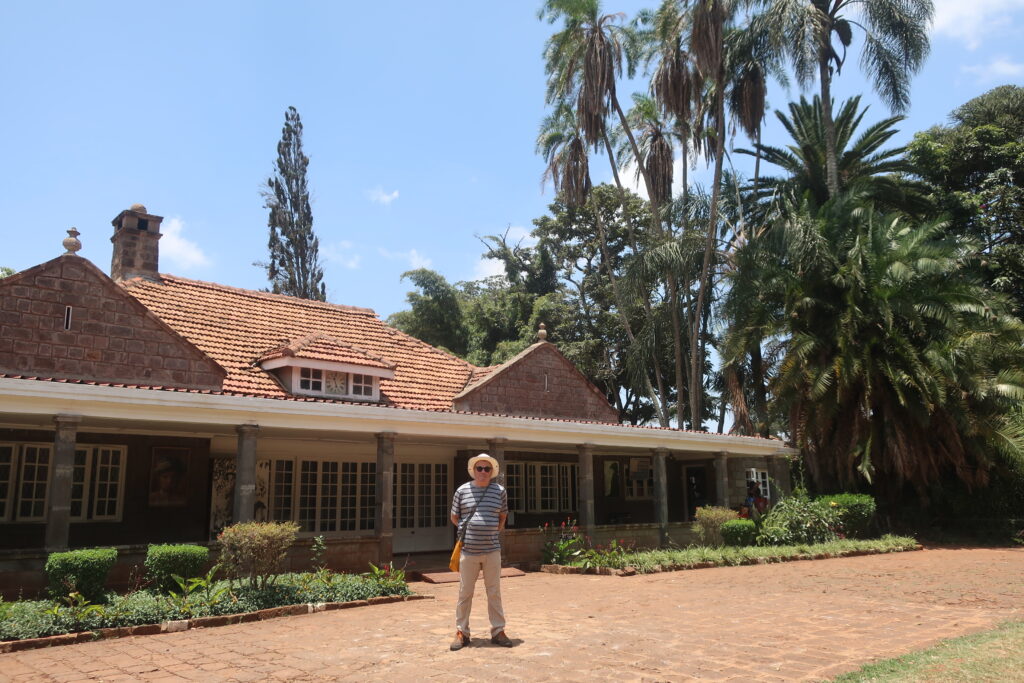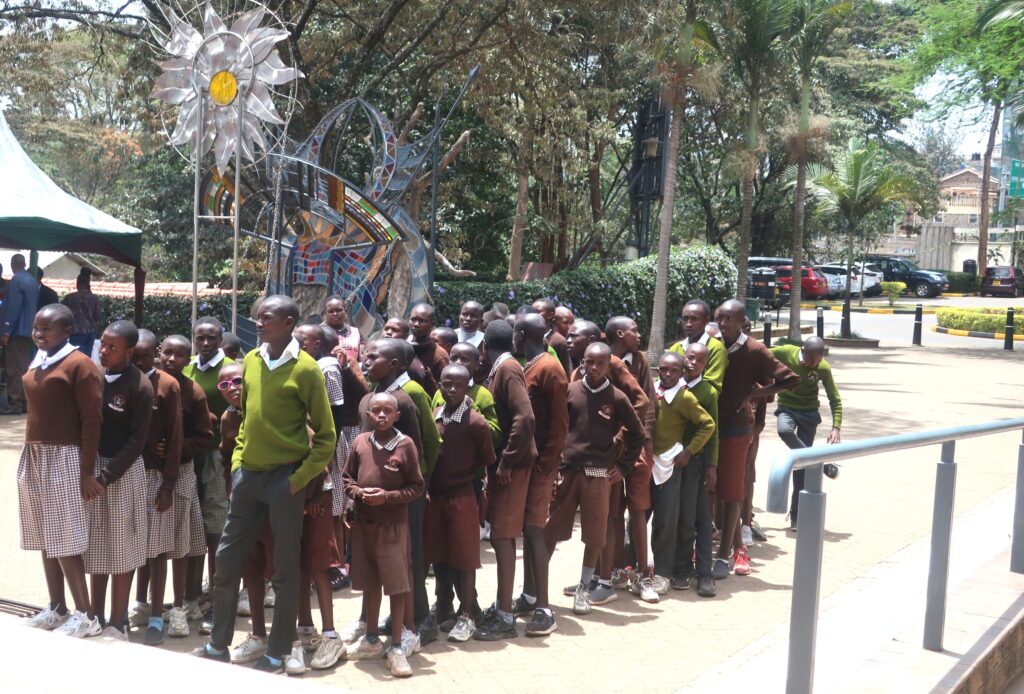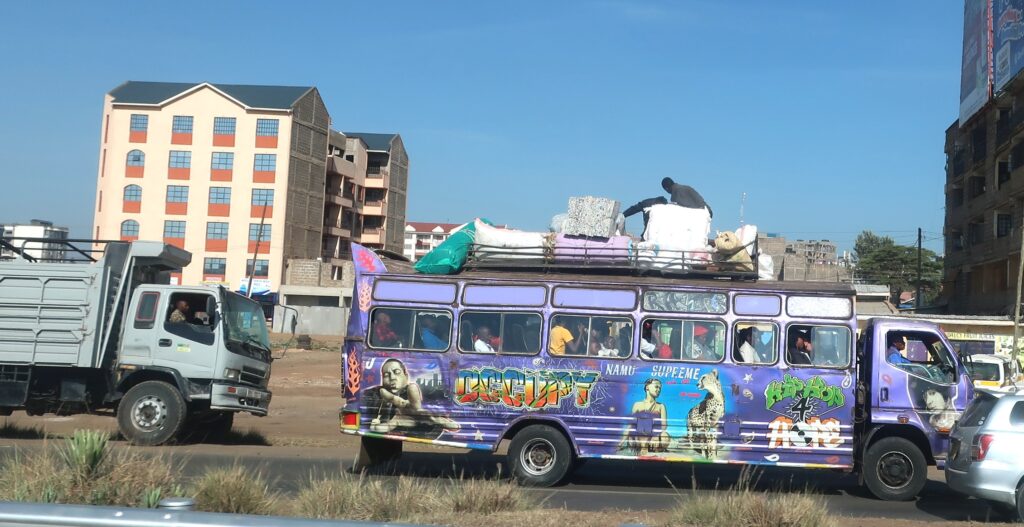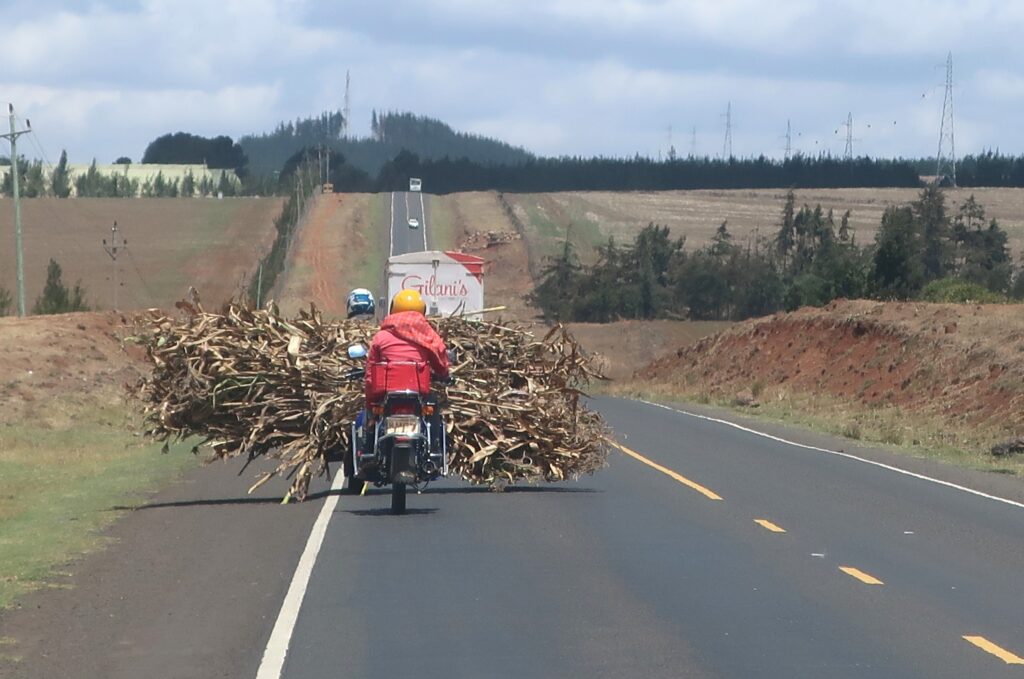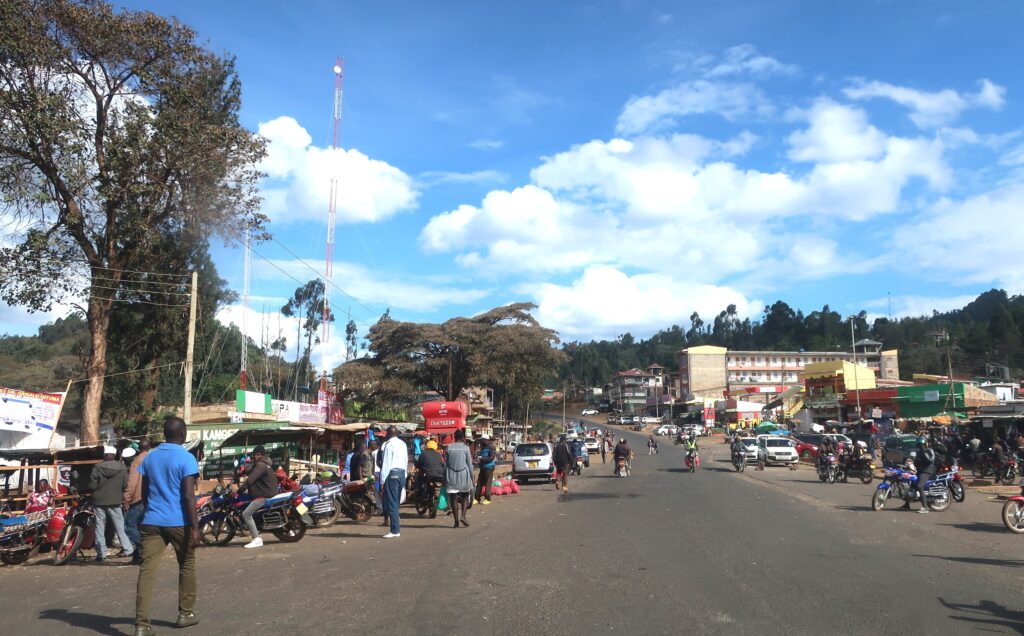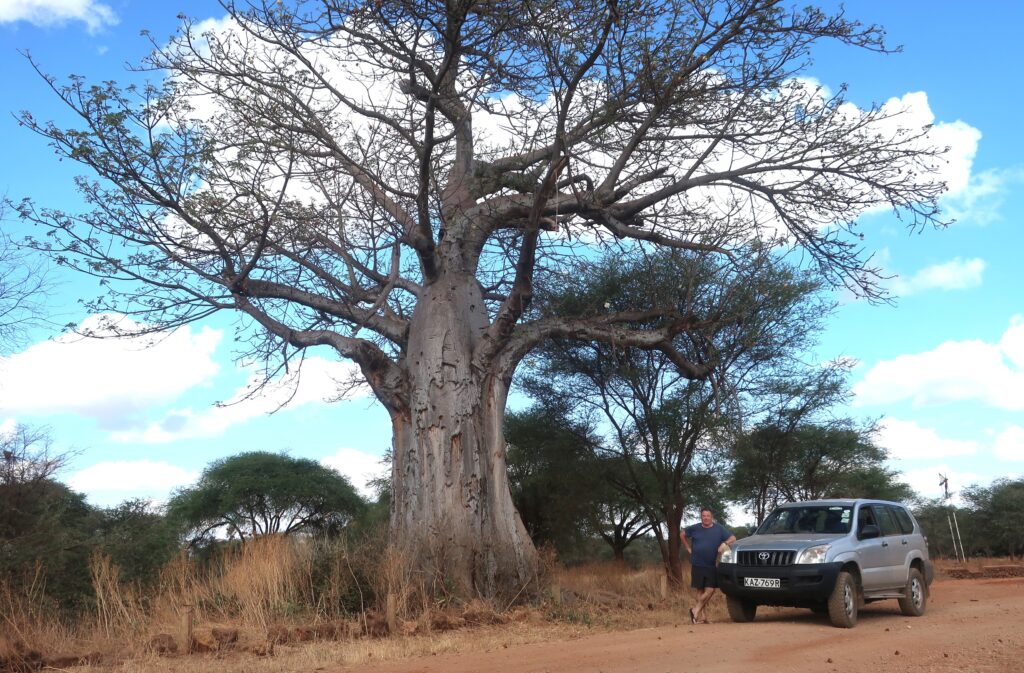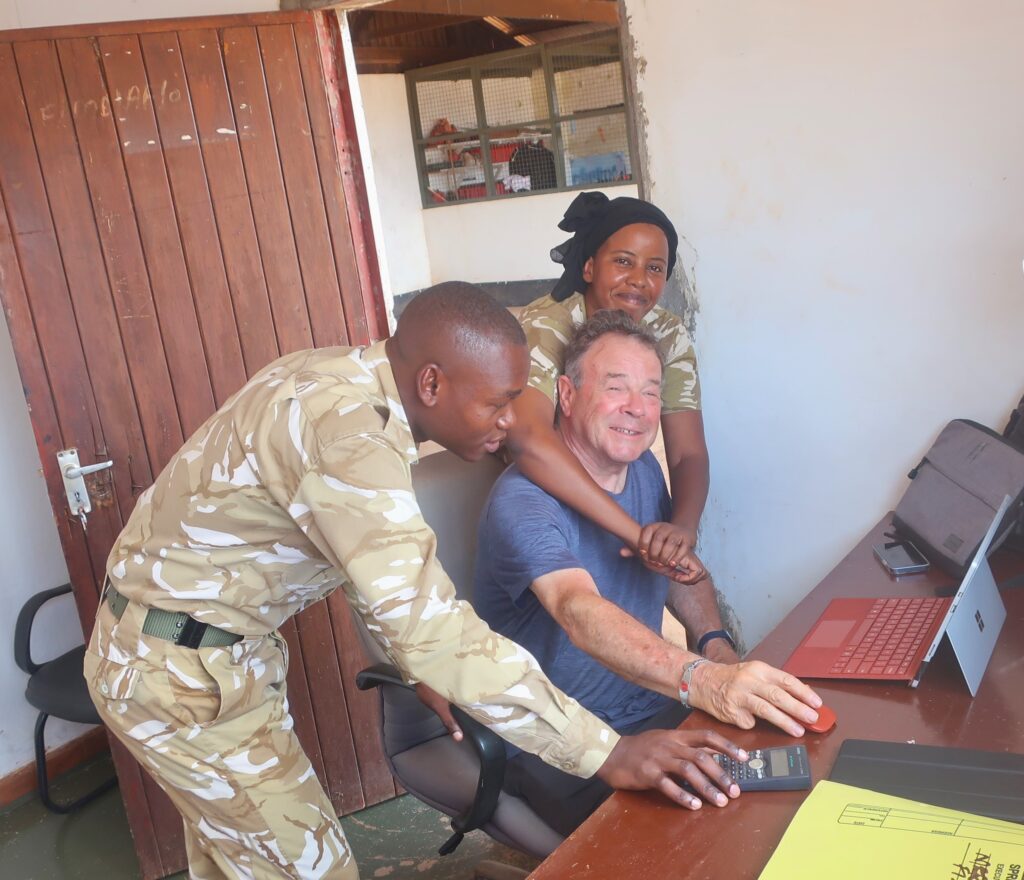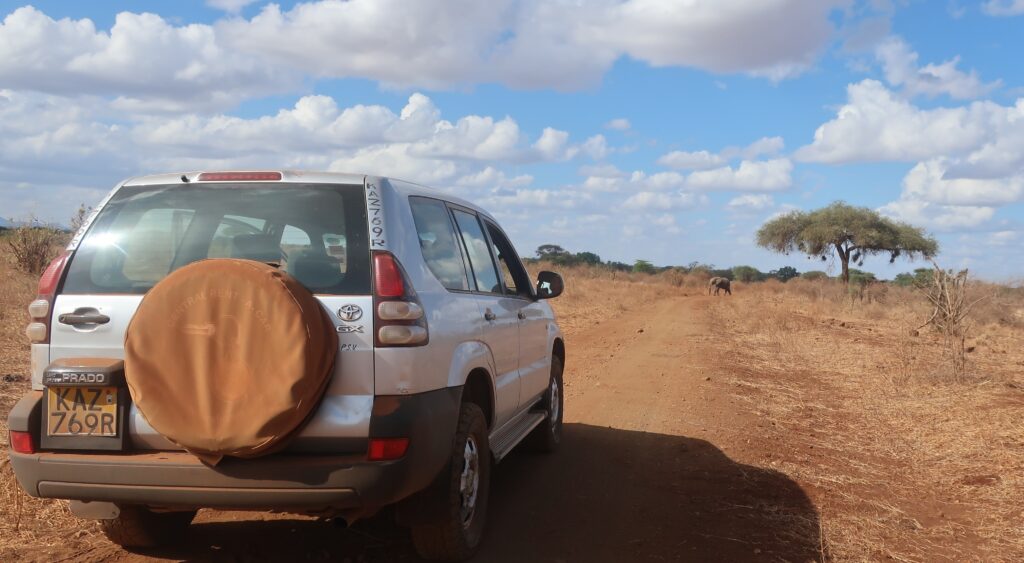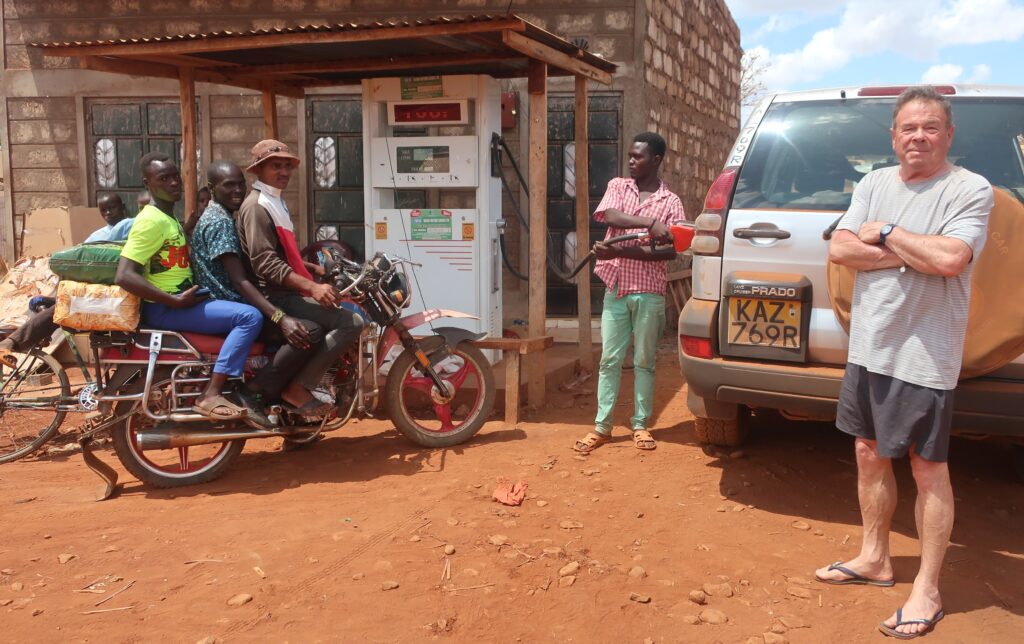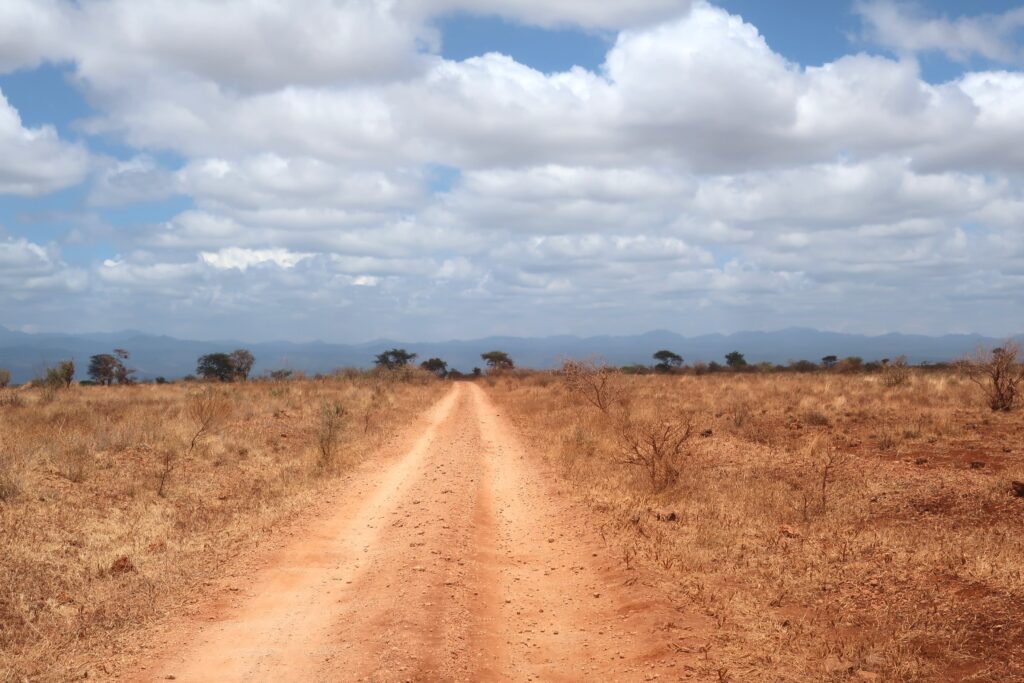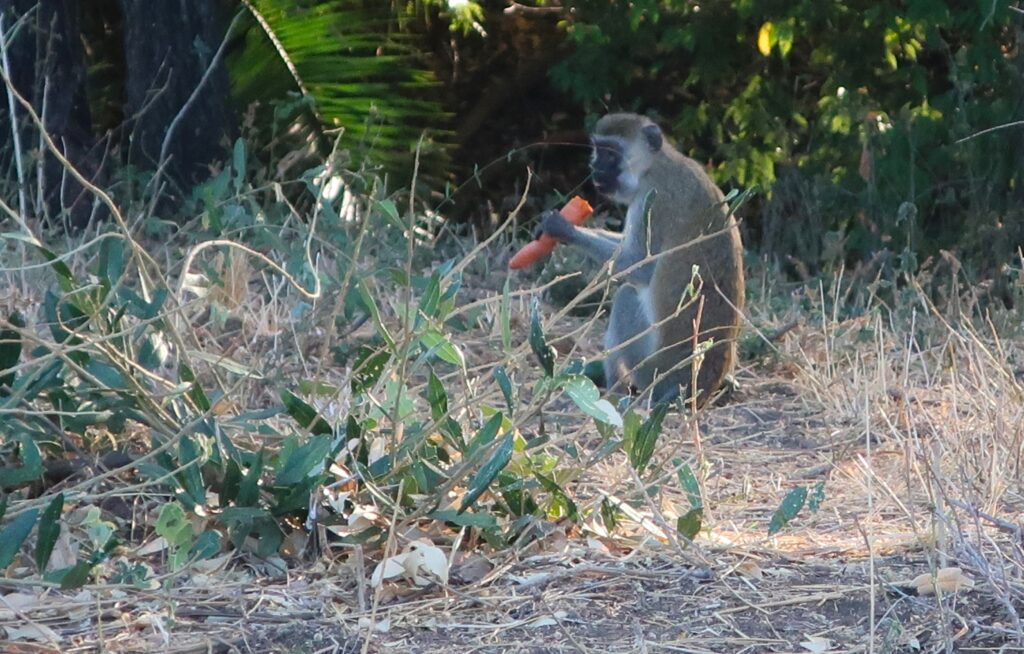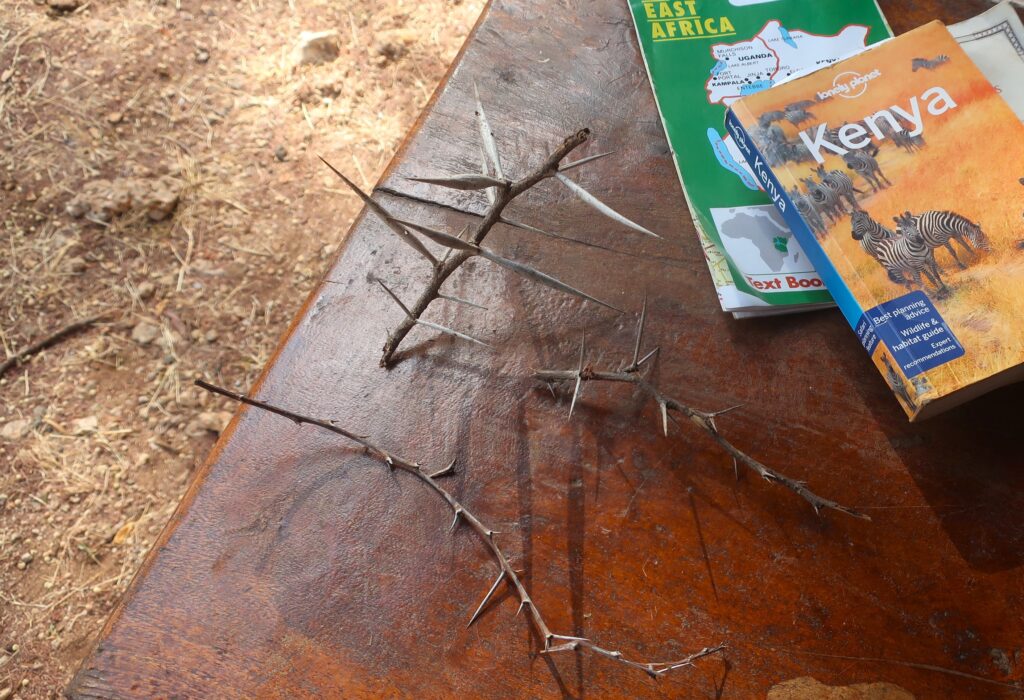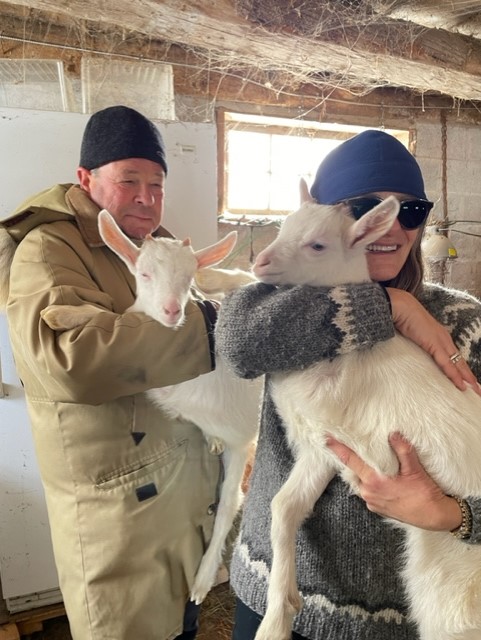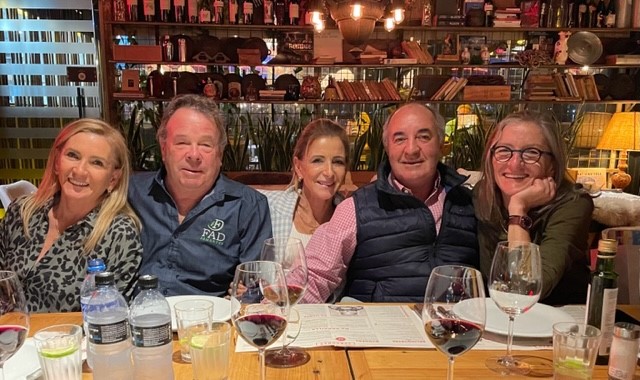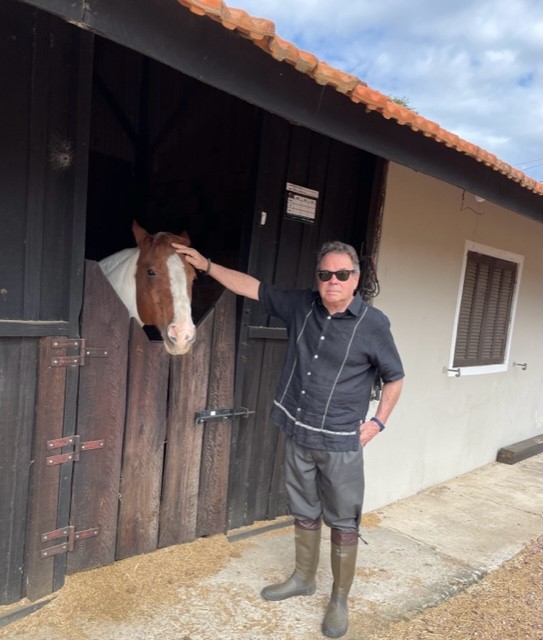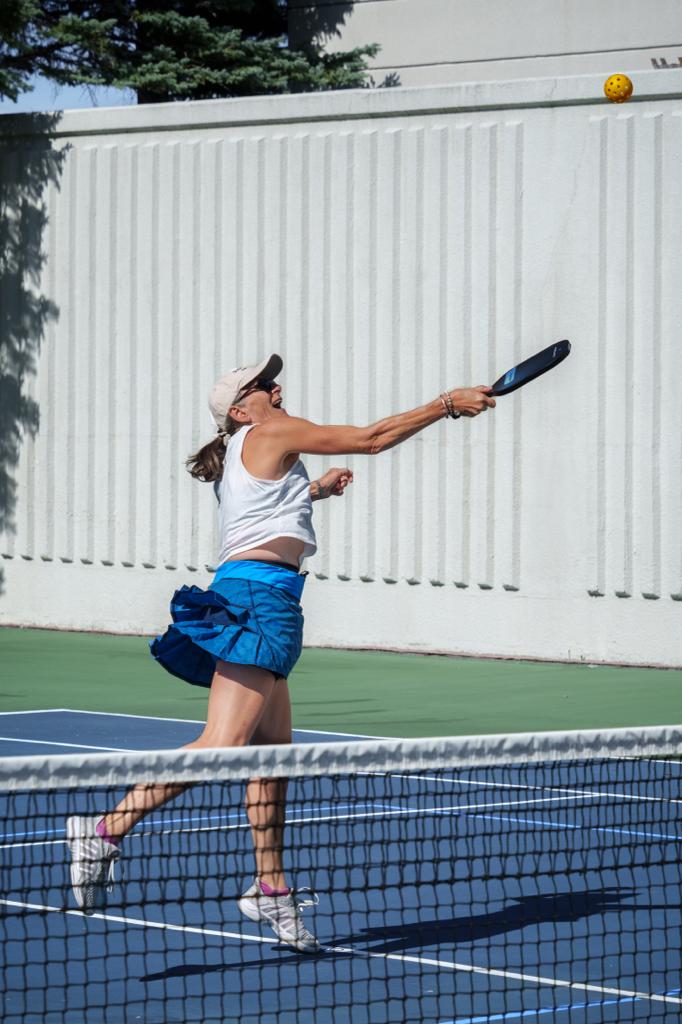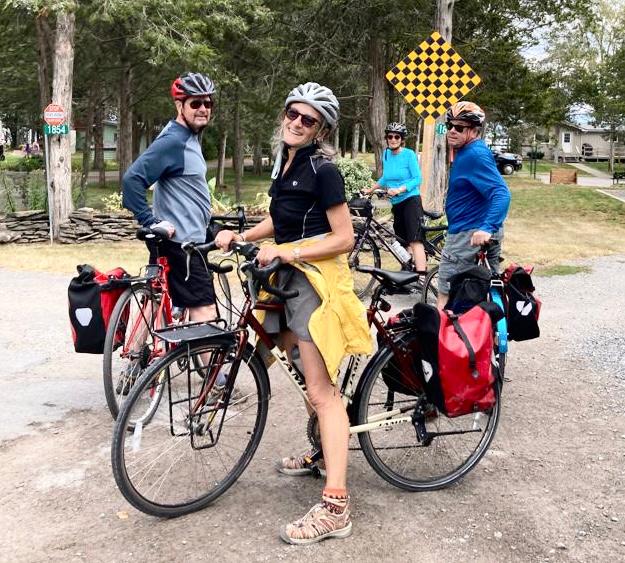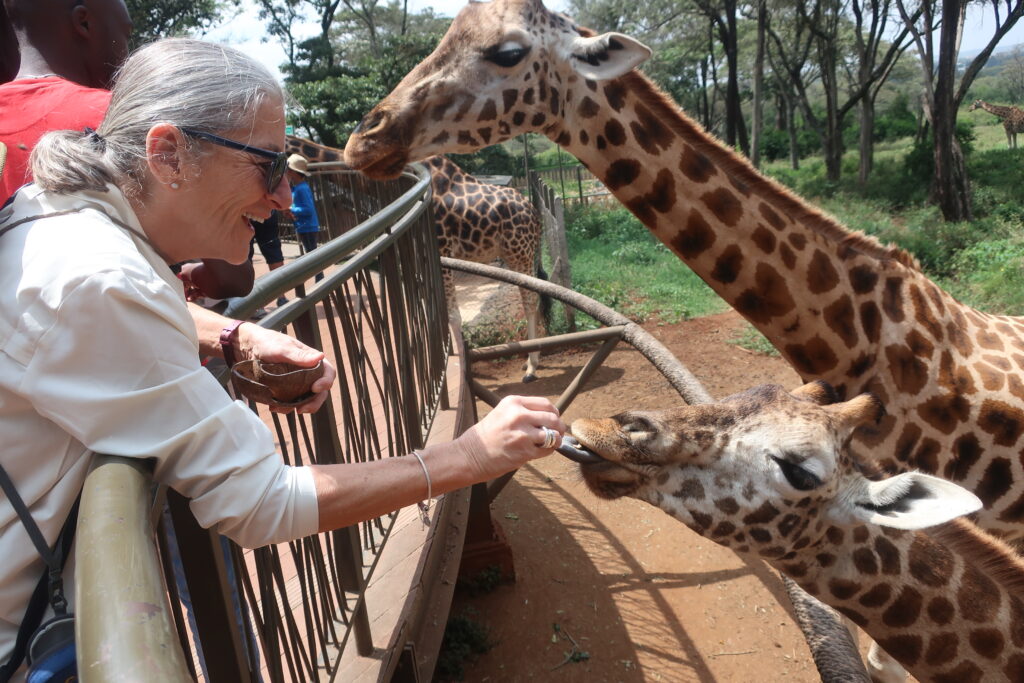Our next stop is Samburu National Reserve. (There is a difference between a ‘National Park’ and a ‘National Reserve’, but we don’t know what it is.)
On the way, we pass what appears to be a market for second-hand clothes.
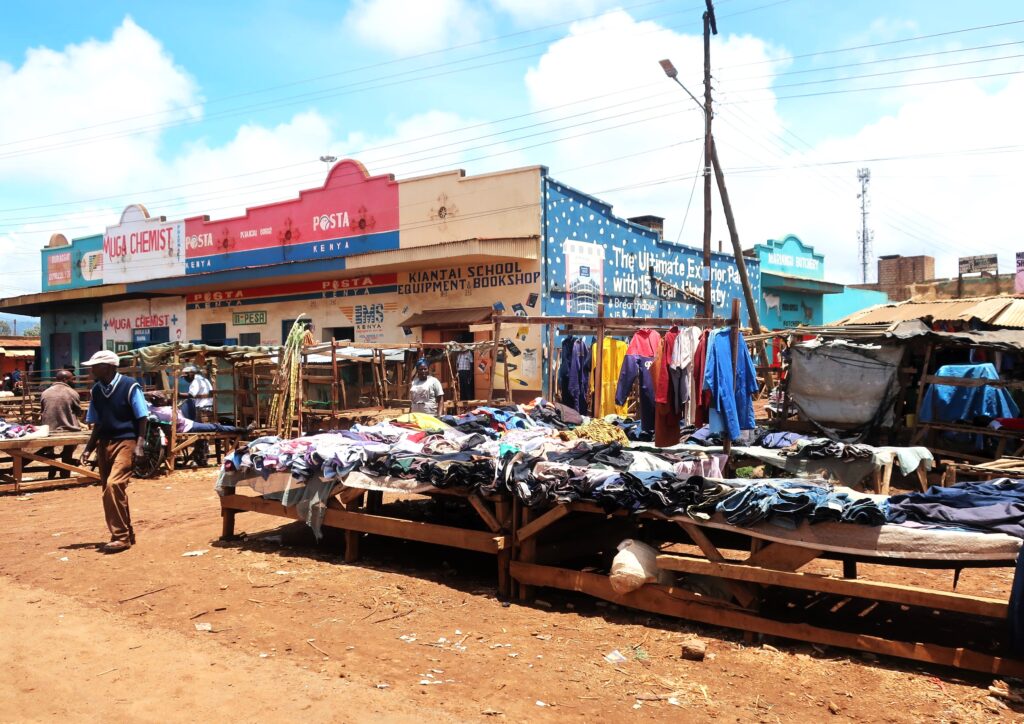
We reach the park gate well before sunset.
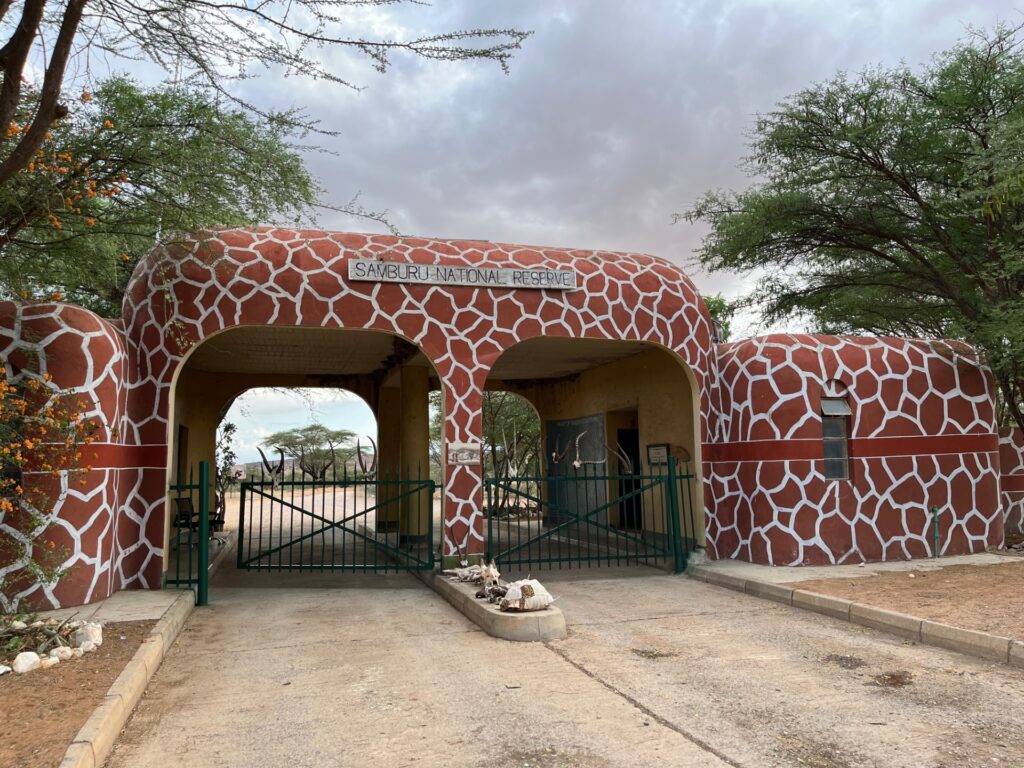
The Samburu National Reserve was one of the two areas in which George Adamson and Joy Adamson raised Elsa the lioness. Possibly the world’s most famous lion not created by Walt Disney.
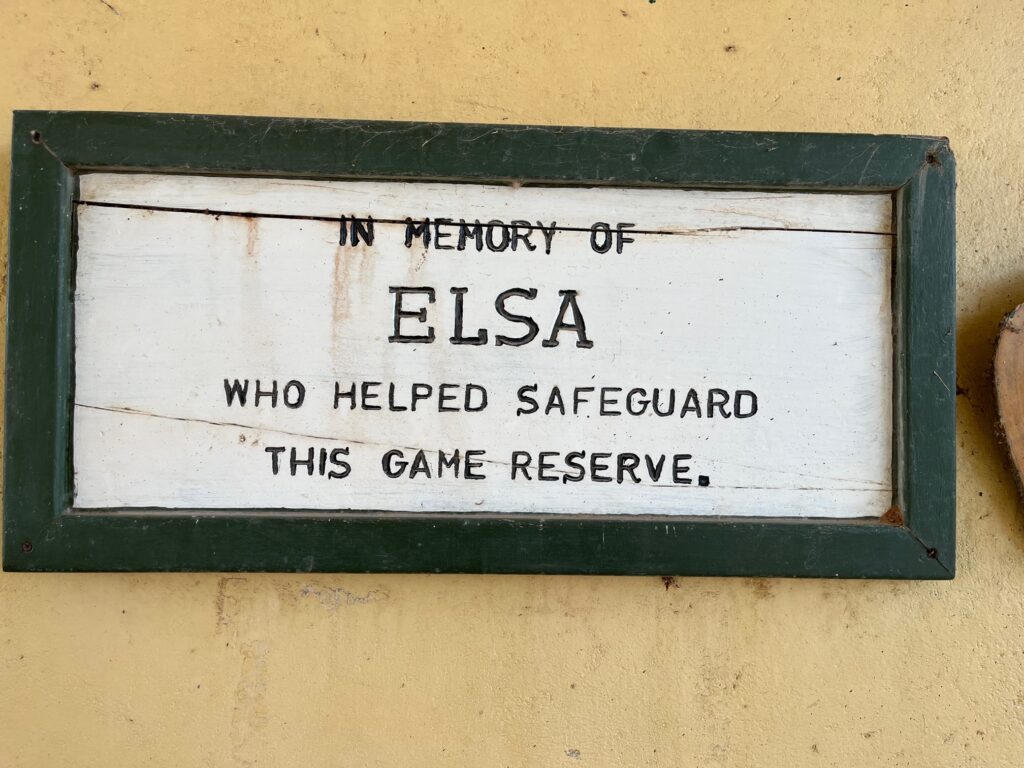
Samburu is very scenic. There’s a river. There are some mountains. In between is the wildlife.
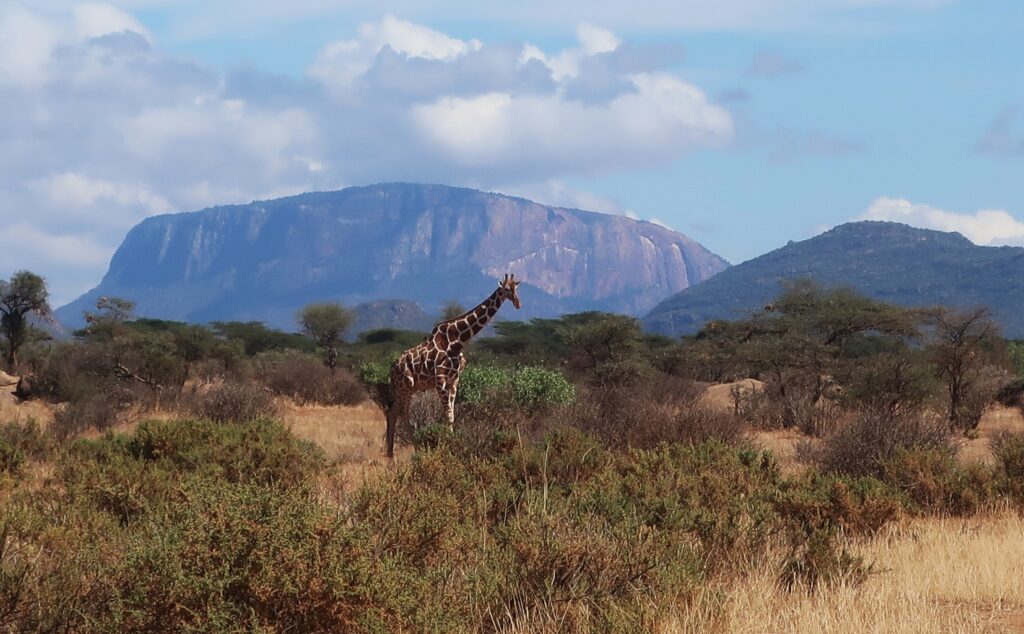
The Ewaso Ngiro River flows through the park on its way to Somalia.
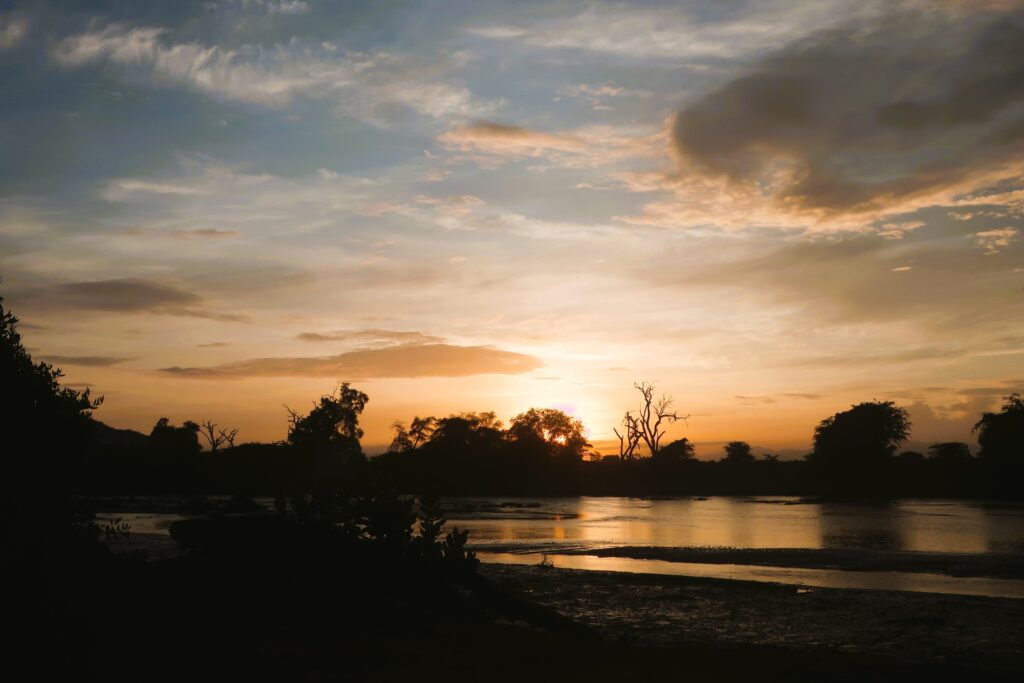
We are fortunate to come across a family of five cheetahs. Or maybe it’s a gang.
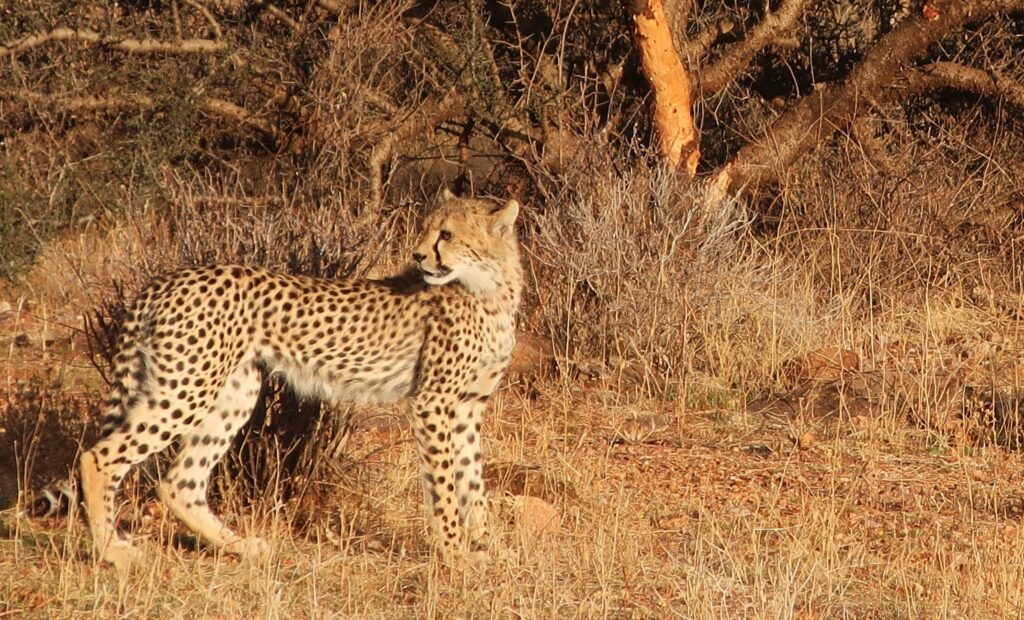
This gives an idea of how close these beasts are.
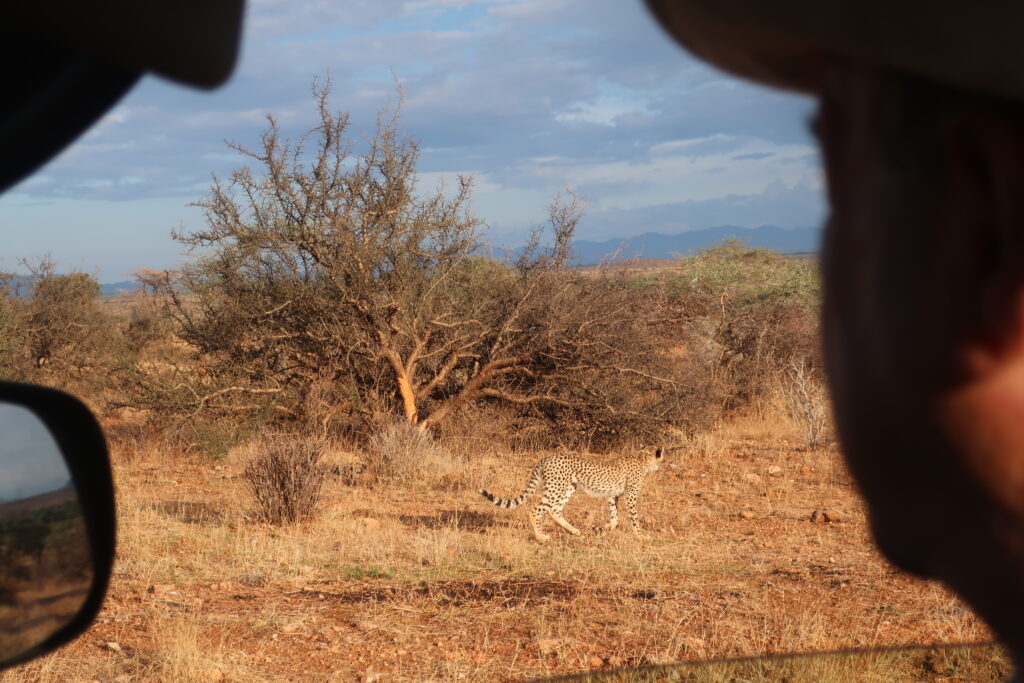
There are many elephants in Samburu, too.
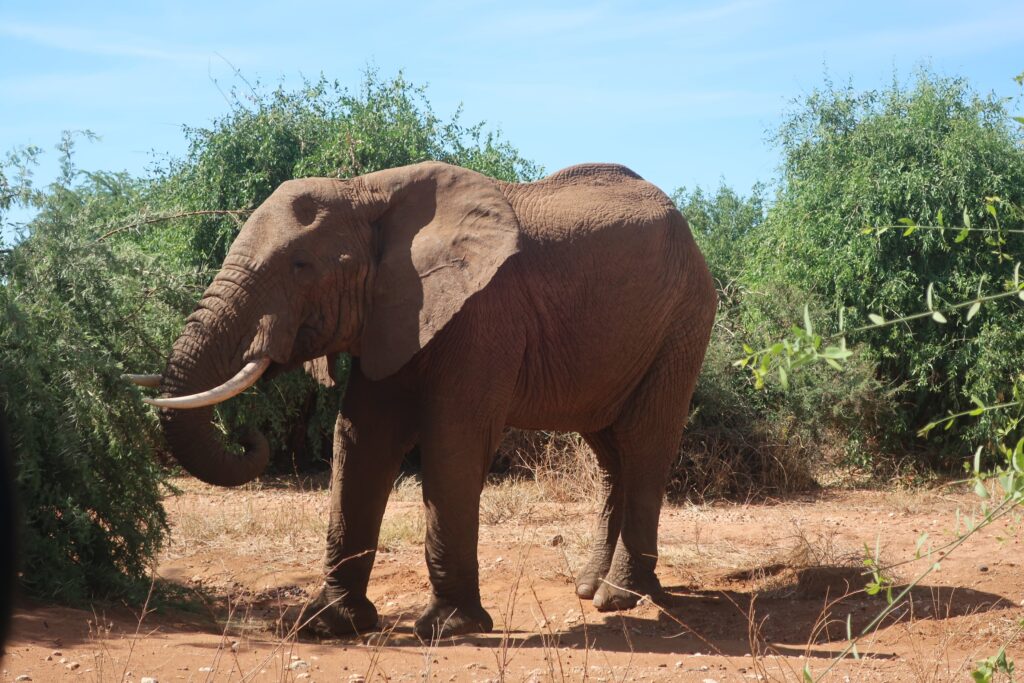
This elephant looks small, compared to my head in the foreground. Don’t be deceived.
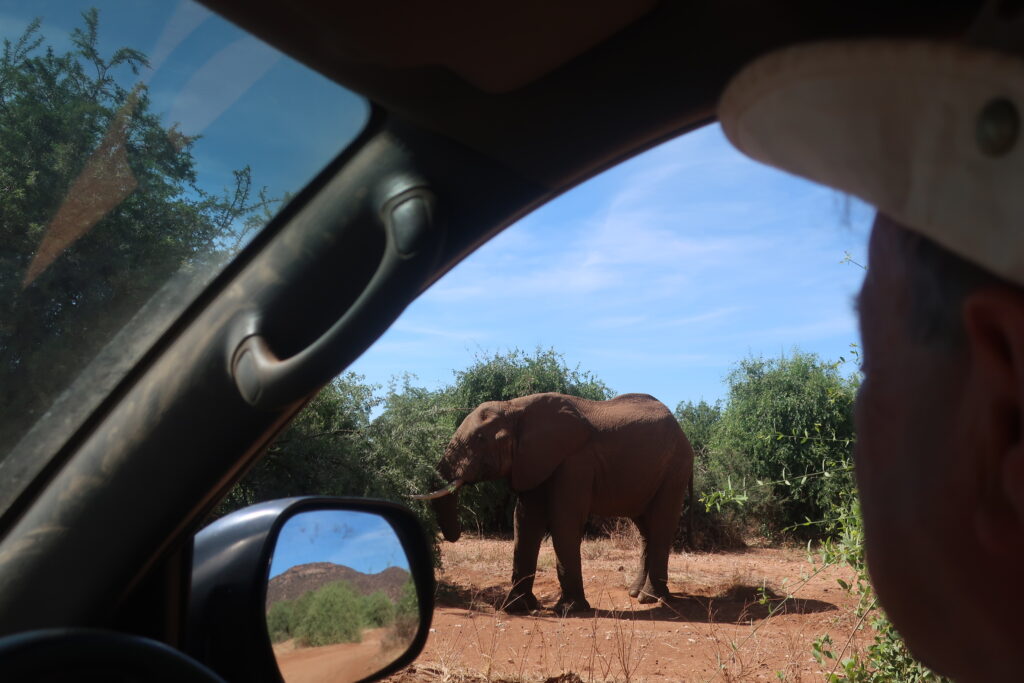
When we depart, we have a plan to drive to Thomson’s Falls via a scenic route. First we head north, on the Isiolo-Moyale section of the A2.
This excellent road goes to Moyale, on the Ethiopian border.
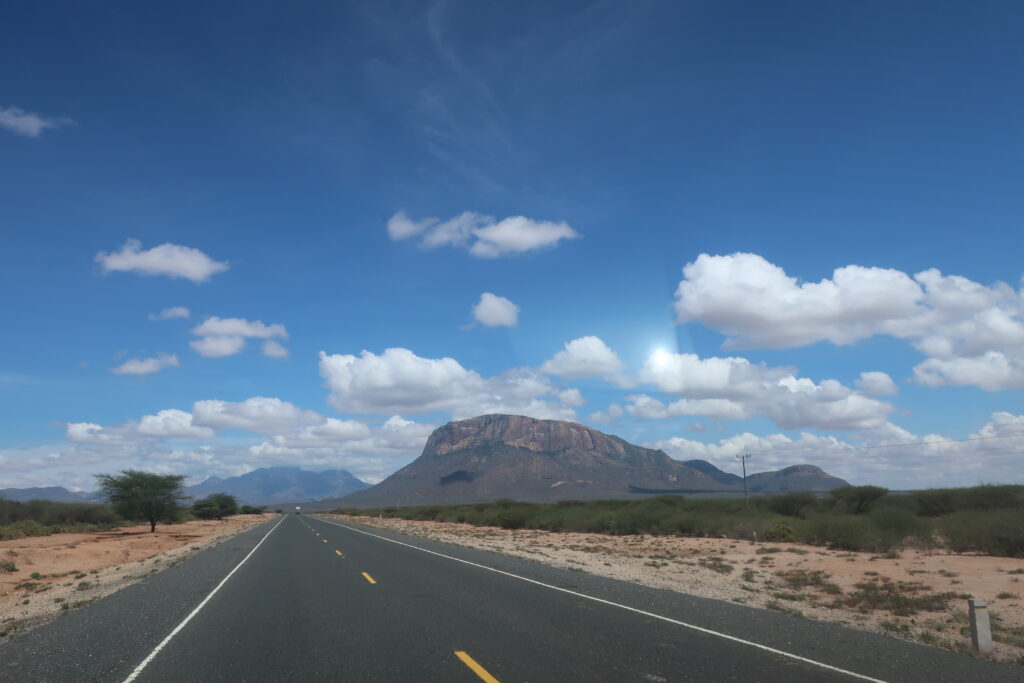
We soon turn off onto a dirt road. This is it for the next few hundred kilometres.
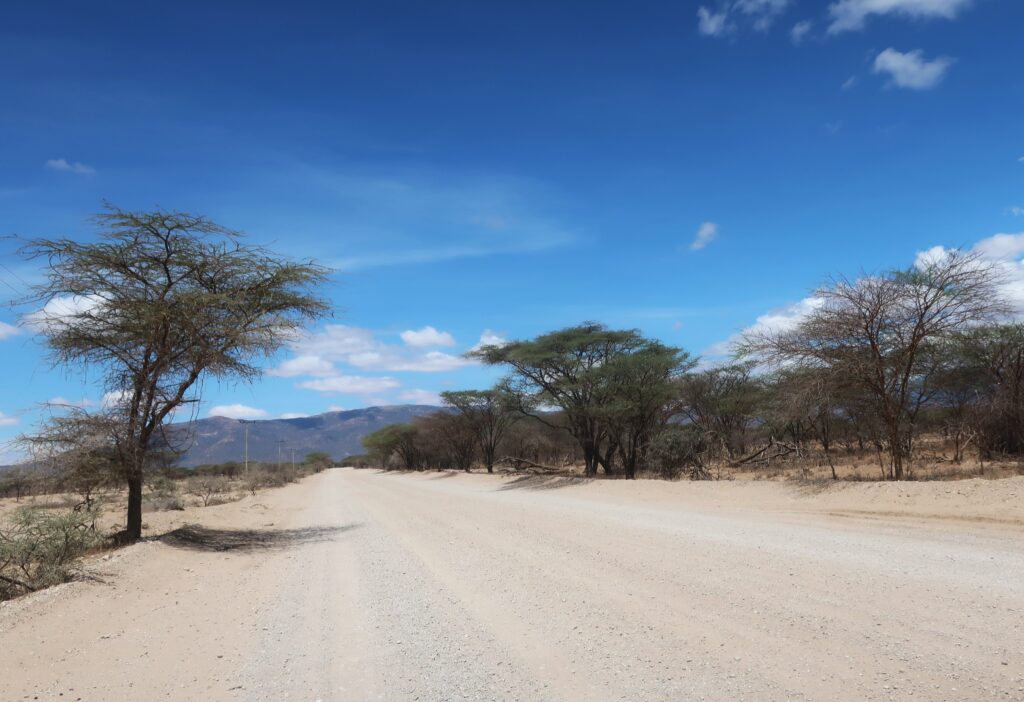
The local Samburu people herd camels, as well as the usual sheep and goats.
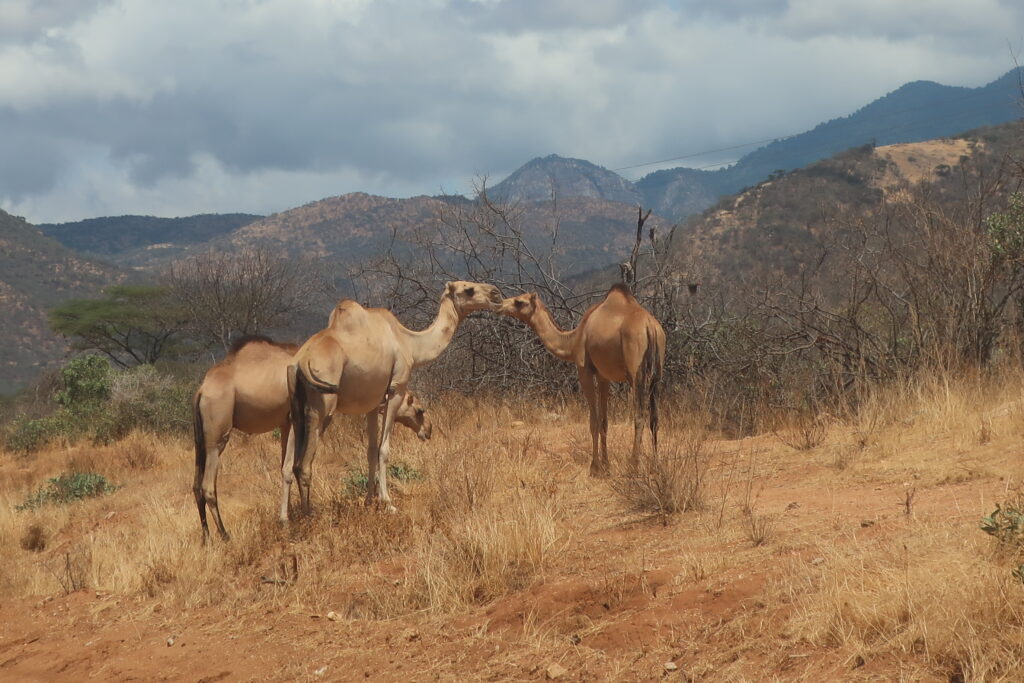
Like most Kenyan towns, the ones we go through are impoverished and not very inviting.

The Samburu women, however, are very statuesque.
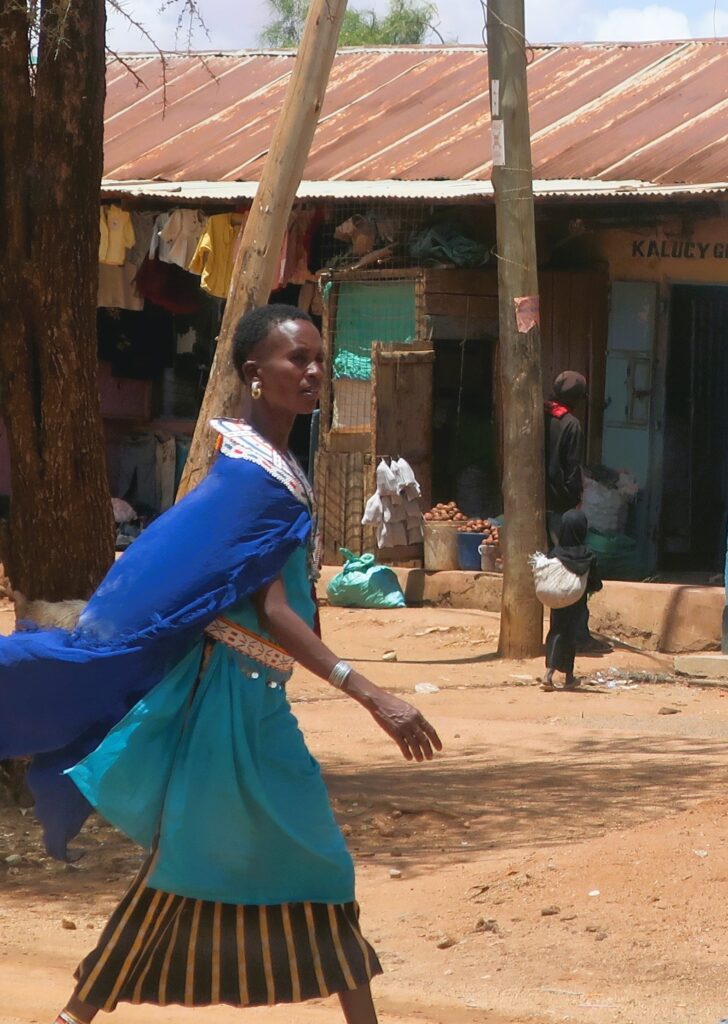
Our original plan turns out to be a risky proposition. The road is not good, fuel is a concern, signage is nonexistent. By midday we have travelled a fraction of our desired itinerary. So we backtrack to the main road and take the easy way to Nyahururu (the updated name for the-town-formerly-known-as-Thomson’s-Falls).
We treat ourselves to a stay at the Thomson’s Falls Lodge. It has a slightly run down colonial air, but is still comfy. The gardens are superb.
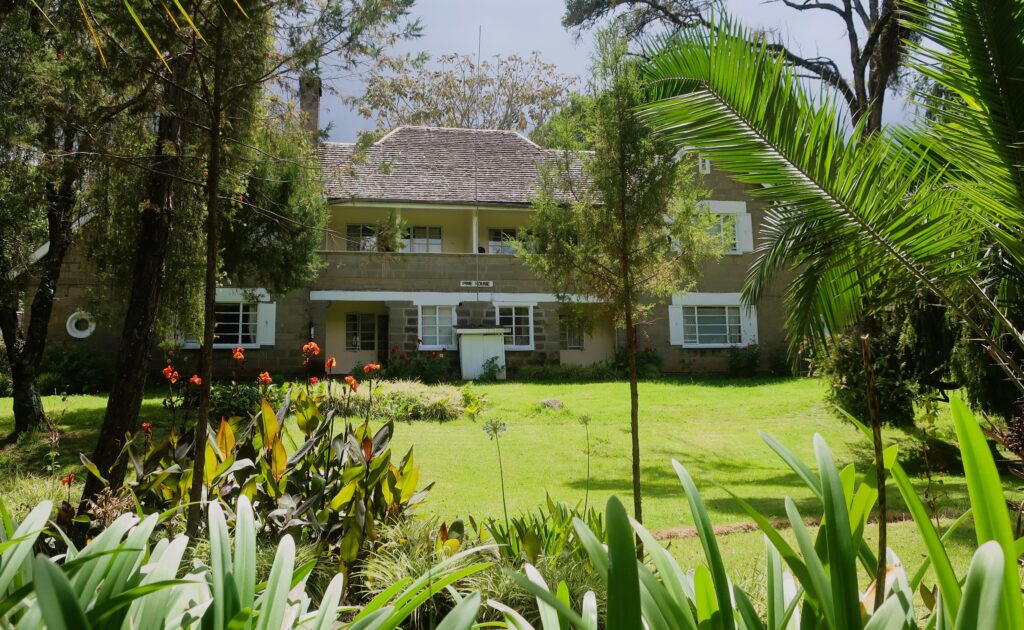
The falls themselves are fun to visit, after a challenging hike down a very slippery path.
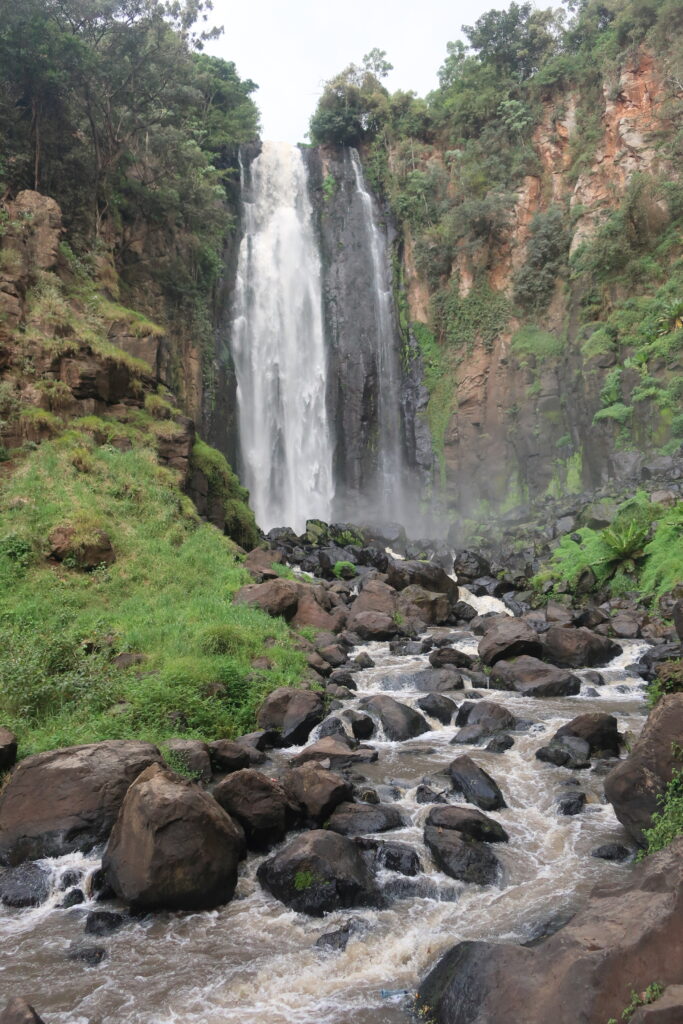
A party of schoolchildren are eager to be in our photo.
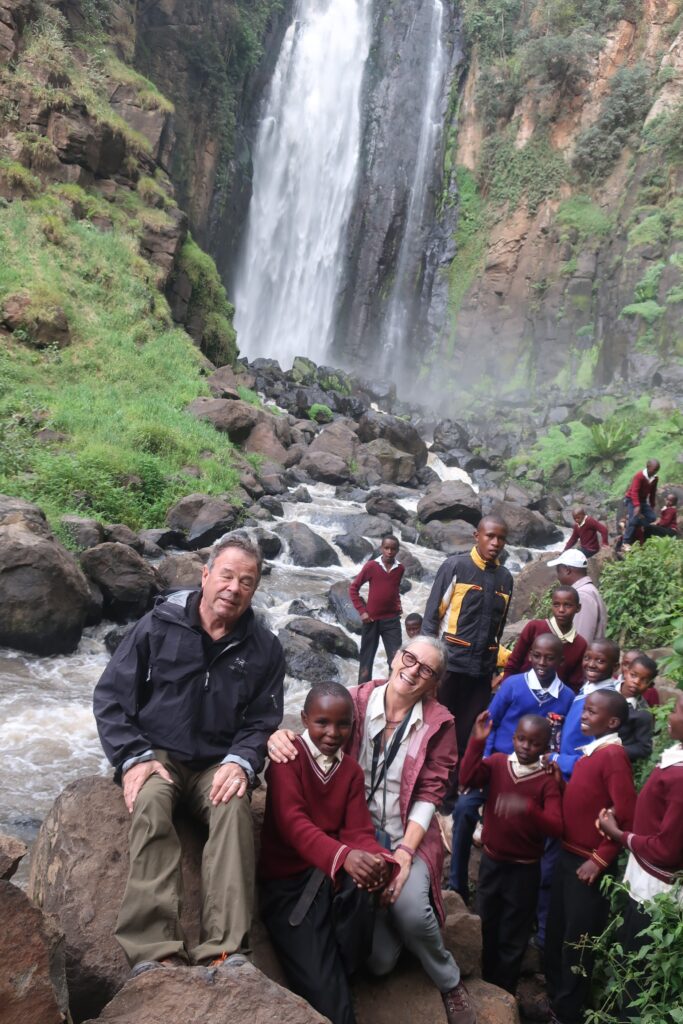
Note we are dressed for the weather. Nyahururu is supposed to be the ‘highest town in Kenya’. So it’s chilly.
Sight or Insight of the Day
Speaking of elephants, we receive a nocturnal visit from one. Back in Samburu, we stayed in these sturdy safari tents.
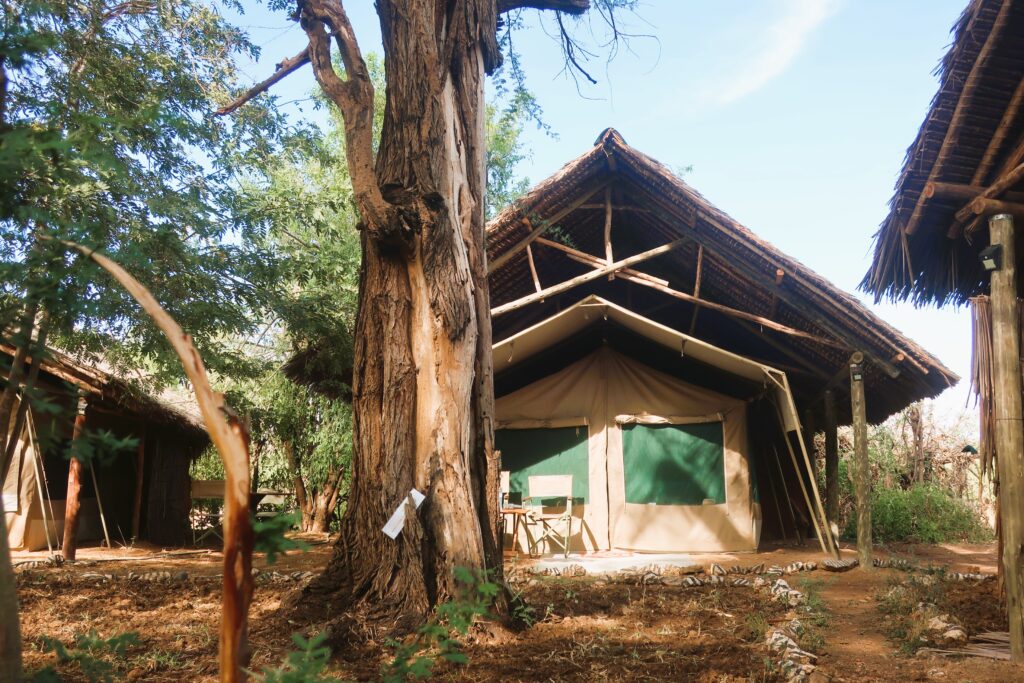
During the first night, we awake to the sound of the tree outside our tent being systematically de-branched a couple of metres away. It’s as if a clumsy giant were tramping through a forest of giant dry underbrush.
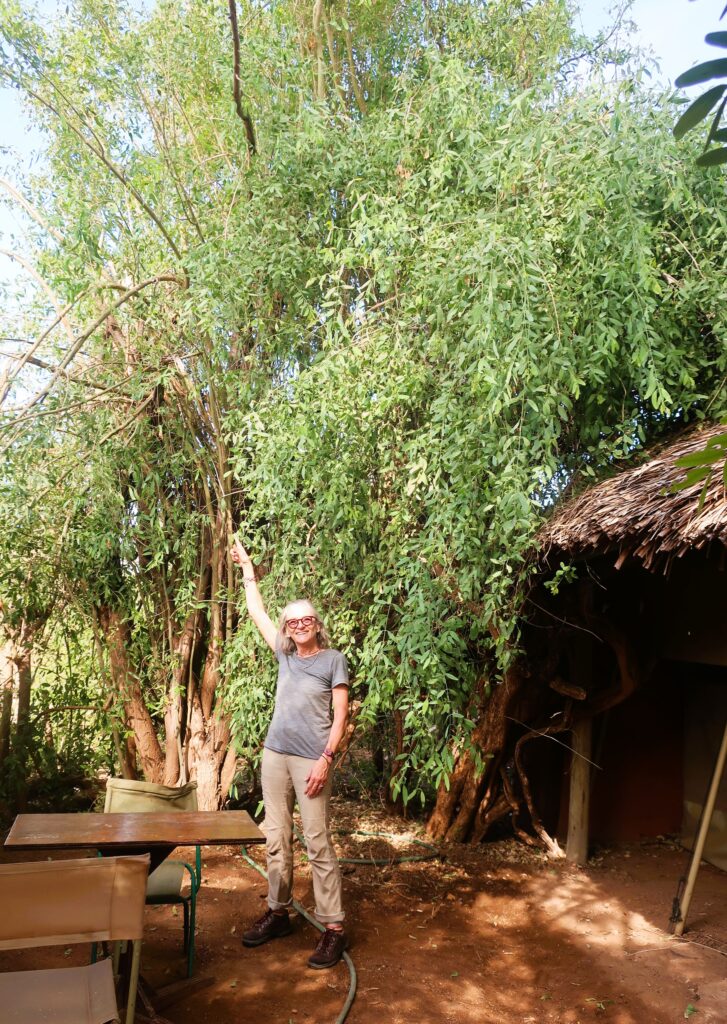
In the pitch-black, all we can hear is the noise of branches being ripped off of the tree, seemingly right beside our heads. It’s a good thing we weren’t staying in our own easily-squishable tent!
